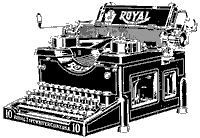I finished The Lady in the Tower today, about, of course, Anne Boleyn. I suspect this book is to Plaidy what The Other Boleyn Girl is to Philippa Gregory: if you've read one Plaidy book, this is probably it. It's one of the later Plaidys, published in the United States in 1986, and not surprisingly, it was one of the first two Plaidy novels to be reissued by Three Rivers Press. Judging from the very rumpled state of my library copy, it's been quite a popular read.
This was actually a re-read of this novel for me. I read it several years ago, when I was just getting interested in historical fiction in a big way, and it's probably the first novel I'd read about Anne Boleyn. Having read a number of novels about Anne since, I was pleased to see how well it compared to more recent efforts.
Like many other novels about doomed queens, The Lady in the Tower is narrated in the first person by the heroine on the eve of her execution. (Question: are there novels about doomed kings told in the first person on the eve of the hero's execution? I can't remember a single one if so.) Anne looks back to her childhood at Hever, her intellectually stimulating time at the French court, her thwarted romance with Henry Percy, and her relationship with Henry VIII. She tries to understand the mistakes she's made, and though she judges Henry harshly, she's not inclined to let herself off easily either.
Those who have been accustomed to more sensational portraits of Anne won't find one here. Anne doesn't poison anyone, sleep with anyone besides Henry, engage in wild outdoors sex, or speak in modern American slang. Plaidy's prose, however, is rather flat compared to that of some of her more recent counterparts. There's some clunky dialogue, in particular that between Anne and her brother, and the chapters in which Henry schemes to divorce Catherine tend to drag, though a reader who is new to the history involved might not think so. The first person narrative imposes its own restrictions; by being limited to Anne's perspective, we miss out on other potentially fascinating ones, such as those of Anne's male courtiers.
Still, Plaidy tells an absorbing story, and her Anne is a sympathetic, yet flawed heroine. Those who are new to the story of Henry VIII and his six wives would be well advised to start their fictional journey here.
Saturday, July 14, 2007
Subscribe to:
Post Comments (Atom)



5 comments:
The Lady in the Tower was indeed my first Plaidy novel, and no other novels on Anne Boleyn compare. The only other novel that does not represent her in a bad light is Robin Maxwell's The Hidden Diary of Anne Boleyn. I just started her November 2007 release Mademoiselle Boleyn, and I will let you know how it is. It only covers Anne's early life in the Hapsburg court and then France.
I don't know of any fallen king novels, but The Autobiography of Henry VIII by Margaret George is from his perspective, and that of his fool Will Somers. I found it an excellent read, and it makes his side of the story seem so relevant.
I'm eager to hear about Mademoiselle Boleyn! In Saturday's mail I got an old one by Philippa Wiat, The Heir of Allington, that has someone other than Henry VIII fathering Elizabeth I. Not a good sign.
Imagine an autobiography of Edward II, on the eve of his, erm, execution? How do you think that would run?
That would be interesting! I'm reading The Confession of Piers Gaveston, a novel by Brandy Purdy, that takes that approach to Gaveston. Very enjoyable.
Charles I went to the block- imagine a novel about him!
Post a Comment